Serrano peppers are a versatile chili pepper native to Mexico, known for their bright, citrusy heat and crisp texture. Ranging from 10,000 to 23,000 Scoville Heat Units (SHU), they're hotter than jalapeños but milder than habaneros, making them ideal for salsas, sauces, and more. This comprehensive guide covers everything you need to know about serrano peppers, from their heat level and culinary uses to growing tips and storage advice.
Table of Contents
- What Is a Serrano Pepper?
- How Does It Compare to Other Chilies?
- Common Culinary Uses
- Growing Your Own Serrano Peppers
- Buying Guide: Picking the Perfect Pepper
- Picture Gallery: The Many Faces of the Serrano Pepper
- Frequently Asked Questions (FAQs)
- Conclusion
What Is a Serrano Pepper?
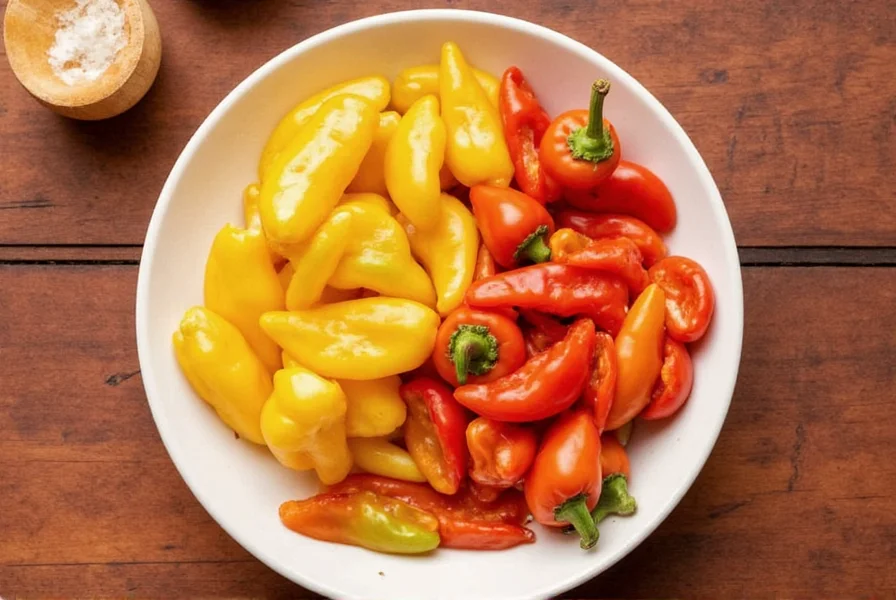
The serrano pepper (Capsicum annuum) is a chili pepper native to Mexico, named after the Sierra Mountains where it was first cultivated. It’s small — usually between 1 to 2 inches long — and packs a moderate amount of heat, ranging from 10,000 to 23,000 Scoville Heat Units (SHU). That places it comfortably above jalapeños but far below scorchers like habaneros or ghost peppers.
They come in a rainbow of colors when ripe — green, red, orange, brown, even purple — and are commonly used fresh, canned, or pickled in Mexican cuisine. One of the best things about serranos? Their versatility. They can be roasted, chopped raw into salsas, or simmered into soups and sauces for a slow-building kick that won’t dominate the dish.
How Does It Compare to Other Chilies?
| Pepper | Scoville Heat Units (SHU) | Taste Profile | Common Use | Visual Similarity to Serrano |
|---|---|---|---|---|
| Jalapeño | 2,500–8,000 | Mild, earthy | Burritos, nachos, poppers | Very similar, slightly larger |
| Serrano | 10,000–23,000 | Crunchy, bright, citrusy | Salsas, stews, garnishes | Main comparison |
| Cayenne | 30,000–50,000 | Dry, sharp | Ground spice blends | Longer and thinner |
| Hatch Green Chile | 1,000–15,000 | Smoky, sweet | Enchiladas, rellenos | Larger, milder version |
| Habanero | 100,000–350,000 | Fruity, floral | Hot sauces, marinades | Distinctly shorter, wider |
This table shows how the serrano pepper sits in the spice hierarchy. If you want more heat than a jalapeño but less than a habanero, serranos are your sweet spot.
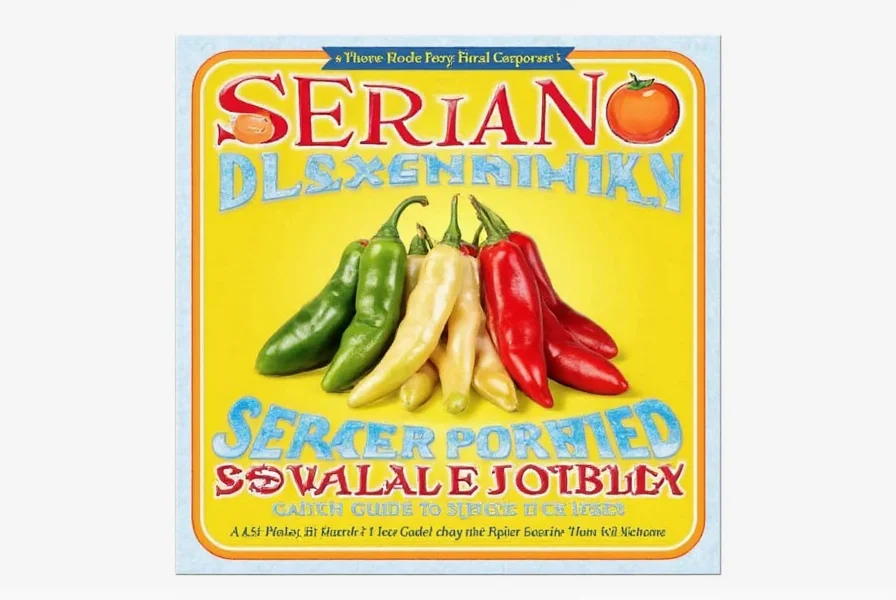
Common Culinary Uses
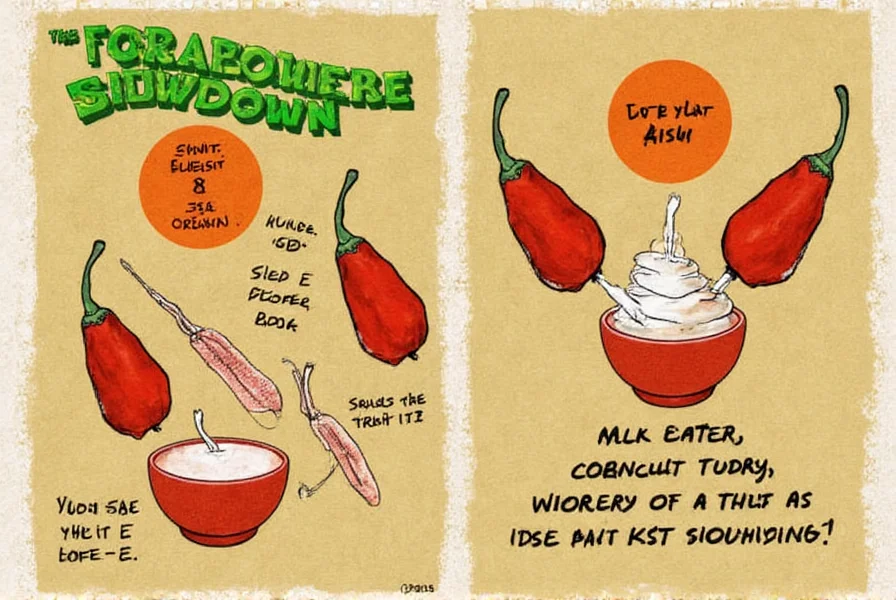
Serrano peppers are kitchen MVPs when it comes to bringing a clean, zesty heat to dishes. Here are some popular ways they’re used:
- Salsas & Guacamoles: Finely chopped serranos bring brightness and spice to your favorite dips.
- Stuffed Peppers: Larger serranos can be stuffed with cheese, rice, or meat for a spicy appetizer or main dish.
- Pickled: Pickling brings out their tanginess while preserving their crunch — perfect for tacos or burgers.
- Roasted: Roasting mellows their heat and enhances their natural sweetness.
- Cocktail Garnish: Float one in a Bloody Mary for a spicy kick and a colorful touch.
Growing Your Own Serrano Peppers
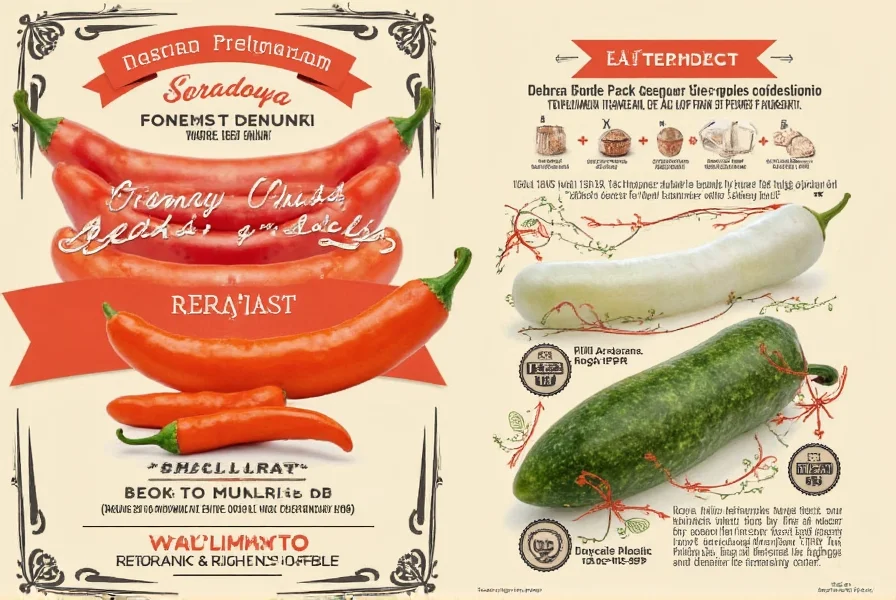
If you’ve ever looked at a picture of a serrano pepper and thought, "I should grow those," then here’s what you need to know:
- Climate: They love warm weather and full sun. Ideal growing zones are 7–11.
- Soil: Well-draining soil with compost is ideal. pH should be between 6.0 and 7.0.
- Watering: Keep the soil moist, especially during flowering and fruiting stages.
- Harvest Time: You can pick them green (milder flavor) or wait until they turn red/orange (more heat and sweetness).
- Pests: Watch out for aphids and spider mites. Organic neem oil works wonders.
They also do well in pots indoors if you live in a cooler climate — just make sure they get enough sunlight or use grow lights.
Buying Guide: Picking the Perfect Pepper
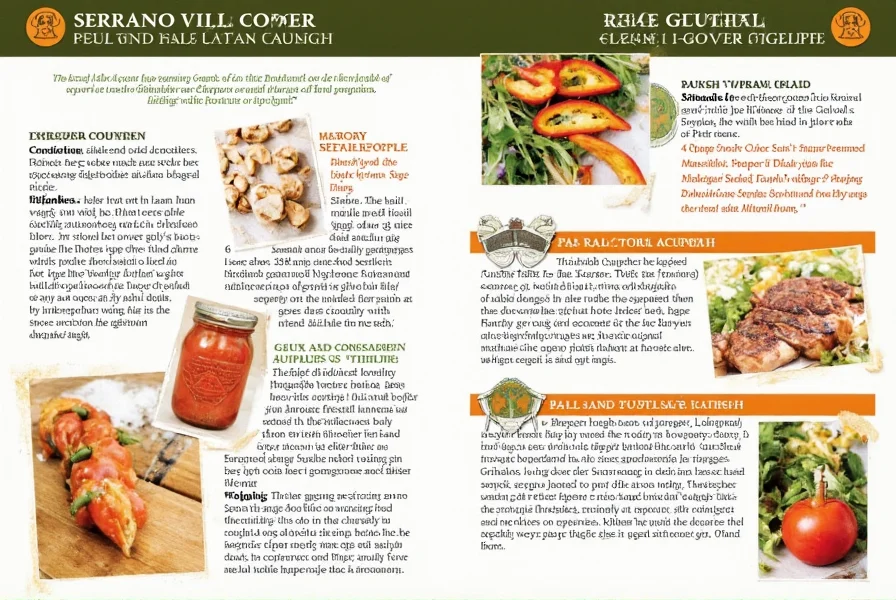
If you're standing in front of a bin full of shiny chilies and wondering which ones to grab, here's your checklist for selecting top-quality serrano peppers:
- Color: Bright green indicates mildness; red/orange means more heat and ripeness. Choose based on your preferred spice level.
- Firmness: Avoid soft, wrinkled peppers. Opt for those that feel firm and glossy.
- Size: Smaller ones tend to be hotter. Go for medium-sized if you prefer balanced flavor and heat.
- Shine: Glossy skin is a sign of freshness. Dull skin means older peppers.
- Seasonality: Peak season is late summer to early fall, but they’re available year-round in most grocery stores.
Pro tip: Always wear gloves when handling serranos! Capsaicin can cause irritation, especially around the eyes and lips.
Picture Gallery: The Many Faces of the Serrano Pepper
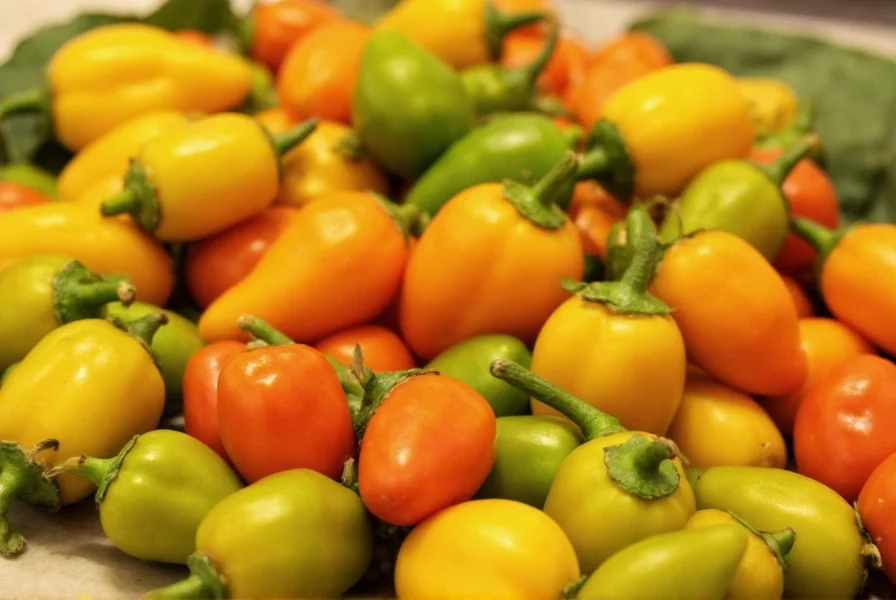
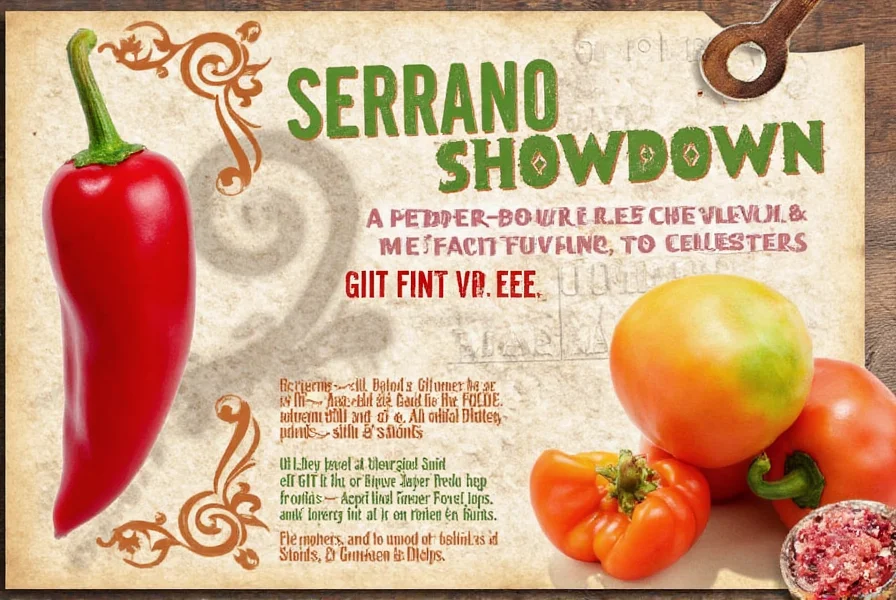

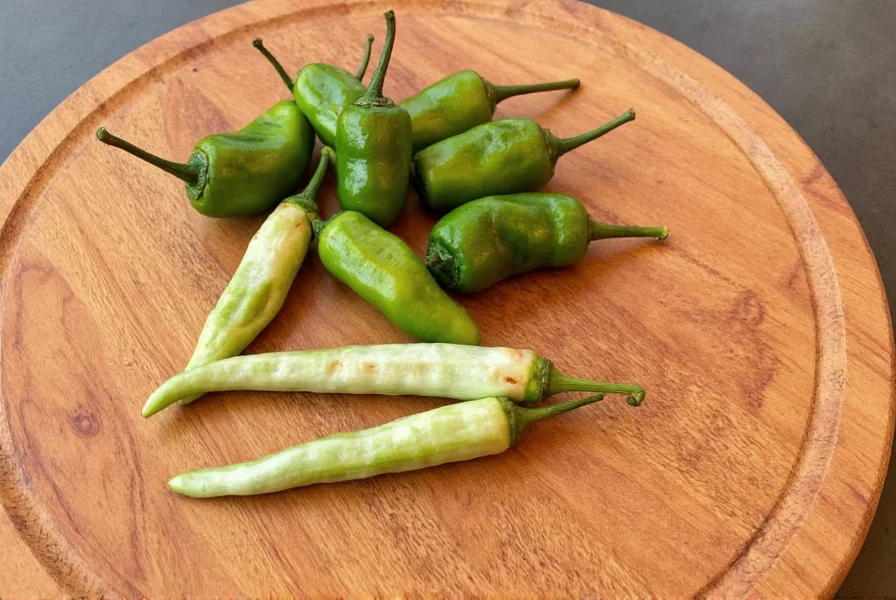
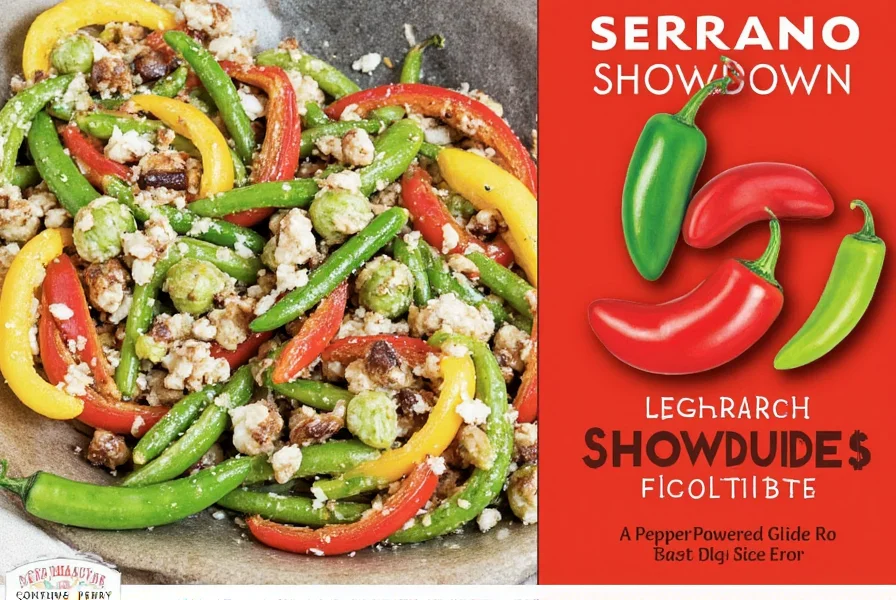
From vibrant greens to deep reds, serranos offer both visual appeal and culinary punch. Each stage of ripeness changes not only the color but also the flavor and heat level — making them an exciting ingredient to experiment with.
Frequently Asked Questions (FAQs)
- How hot are serrano peppers compared to jalapeños?
- Serrano peppers are significantly hotter than jalapeños, ranging from 10,000 to 23,000 Scoville Heat Units (SHU) compared to jalapeños' 2,500–8,000 SHU. This makes serranos about 2-3 times hotter on average.
- Can I substitute serrano peppers for jalapeños in recipes?
- Yes, but with caution. Because serranos are hotter, you'll want to use about half the amount of serranos as you would jalapeños. Also, removing the seeds and membranes will reduce the heat.
- How should I store fresh serrano peppers?
- Store fresh serranos in the crisper drawer of your refrigerator for up to 3 weeks. For longer storage, you can freeze them (whole or chopped) for up to 6 months, or dry and store them in an airtight container.
- Where can I find high-quality pictures of serrano peppers?
- Our Picture Gallery above showcases serrano peppers in various colors and preparations. For additional high-resolution images, check culinary blogs, gardening resources, or stock photo platforms like Unsplash and Shutterstock.
- Why do my serrano peppers taste bitter?
- Bitterness can occur if the peppers are overripe or if they've been exposed to stress (like inconsistent watering). Try using them when they're bright green and firm for the best flavor.
- Are serrano peppers good for you?
- Yes! Like other chili peppers, serranos are rich in vitamin C, vitamin B6, and capsaicin, which may boost metabolism and reduce inflammation. Just be mindful of portion size if you have a sensitive stomach.
Conclusion

In short, the serrano pepper is a must-have for anyone who loves bold flavors without the fire-breathing intensity. With its crisp texture, vibrant colors, and versatile heat level, it’s a staple in kitchens around the world — whether you're grilling up street tacos or spicing up a morning Bloody Mary.
Whether you're learning about serrano pepper characteristics, picking them fresh at the market, or growing your own plants, there’s always room to explore with this flavorful chili. So next time you see these little guys, don’t be shy — grab a handful and let the spice adventure begin!

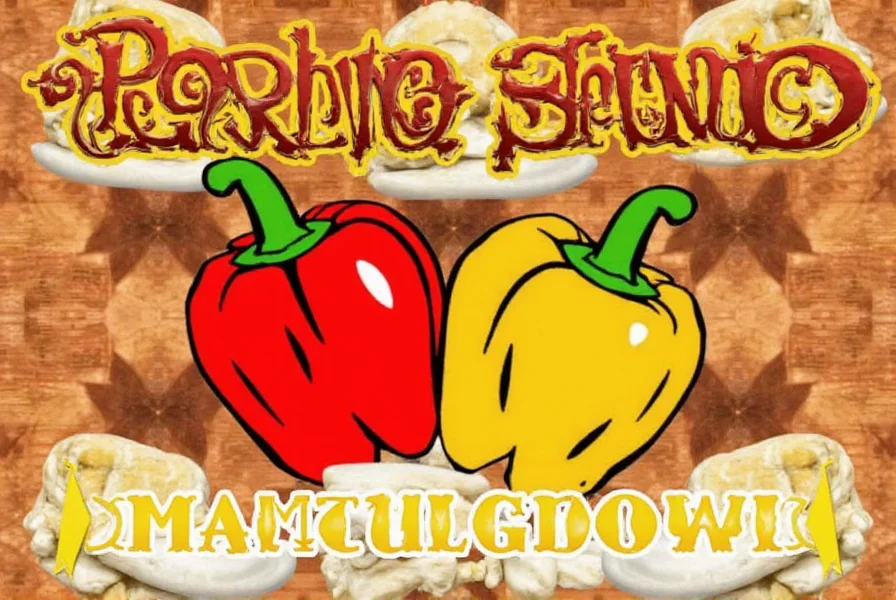









 浙公网安备
33010002000092号
浙公网安备
33010002000092号 浙B2-20120091-4
浙B2-20120091-4